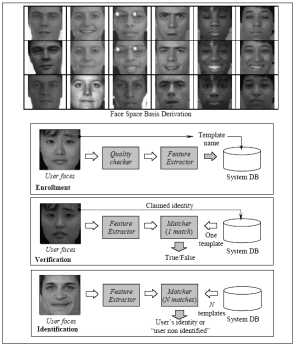Open Set Face / Object Recognition Using Transduction
This research project motivates and describes a novel realization of Transductive inference for Open Set face / object recognition. Open Set operates under the assumption that not all the test probes have mates in the gallery. It either detects the presence of some signature within the gallery and finds its identity or rejects it, i.e., it provides for the Ħ°none of the aboveĦħ answer. We proposed the Open Set TCM ¨C kNN (Transduction Confidence Machine ¨C k Nearest Neighbors), a realization of transductive inference made suitable for multi-class authentication and field operation. Open Set TCM ¨C kNN, driven by the relation between transduction and Kolmogorov complexity, provides a local estimation of the likelihood ratio needed for detection tasks. We provide extensive experimental data to show the feasibility, robustness, and comparative advantages of Open Set TCM ¨C kNN on Open Set identification and watch list (surveillance) tasks using challenging FERET data. Last, we analyze the error structure driven by the fact that most of the errors in identification are due to a relatively small number of face / object patterns. Open Set TCM - kNN is shown to be suitable for PSEI (pattern specific error inhomogeneities) error analysis to identify difficult to recognize faces / Object. PSEI analysis improves biometric performance by removing a small number of those difficult to recognize faces / objects responsible for much of the original error in performance and/or by using data fusion. It significantly broadens the scope of the existing face / object recognition techniques. The technique we proposed can be also widely used in many fields and programs, such as "US-VISIT" or "MOST-WANTED" programs, novel detection in biological data analysis, gene analysis.


Face Recognition Methodology